How to Make Ghee – use it simply as a useful cooking ingredient or for its many health benefits, ghee is a wonderful addition to your culinary repertoire!
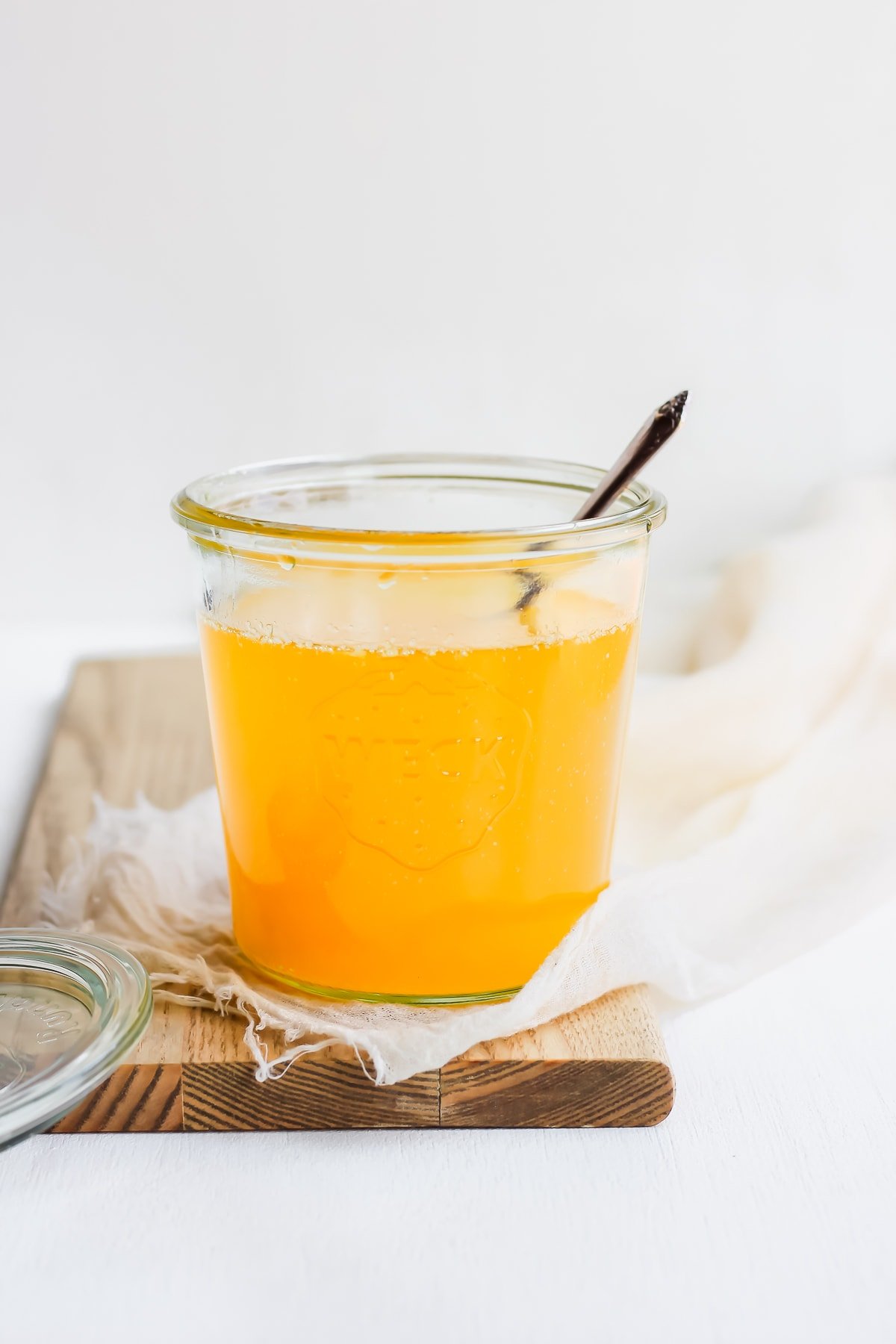
How to Make Homemade Ghee at Home
We love using ghee as a butter-substitute around here – I love the flavor! It is especially good in these Whole30 Mashed Potatoes and this Salmon en Papillote! But, sometimes it can be a bit pricey in stores so I thought we would throw together a tutorial that teaches you how to make ghee at home!
Ghee vs Butter
There are 3 parts butter: butterfat, water and milk solids. Ghee is the product of burning off the water in your butter and then letting the milk solids and butterfat separate. The Ghee is, essentially, pure butterfat, BUT it is butterfat that has been simmered so that it has a rich, golden color and nutty flavor.
Don’t simmer Ghee long enough and you simply have clarified butter. Simmer Ghee too long and you end up with brown butter. (don’t worry I will give you a play-by-play below).
What are the Benefits of Ghee
Here is list of benefits (cooking and health-related) I found so far (and hey – I am (quite obviously) not a doctor so ….. you know the drill. Ask your doctor before making some world-shaking health decisions based upon my couple hours of internet research – ya feel me):
- Ghee has a higher smoke point than butter. Butter can withstand up to approximately 350 degrees while Ghee is upwards of 450-480 degrees.
- Ghee is essentially dairy free as the casein, lactose and whey are removed through the cooking process.
- It is nutrient dense in Vitamins A, D and E.
- Contains Buyrate – a short-chain fatty acid that is thought to be a detoxifier, improve colon health and digestive health and generally reduce inflammation. [source]
- The flavor – is amazing.
How to Make Homemade Ghee
Take one pound of high-quality butter and place in sauce pan. I used Kerrygold and highly recommend.
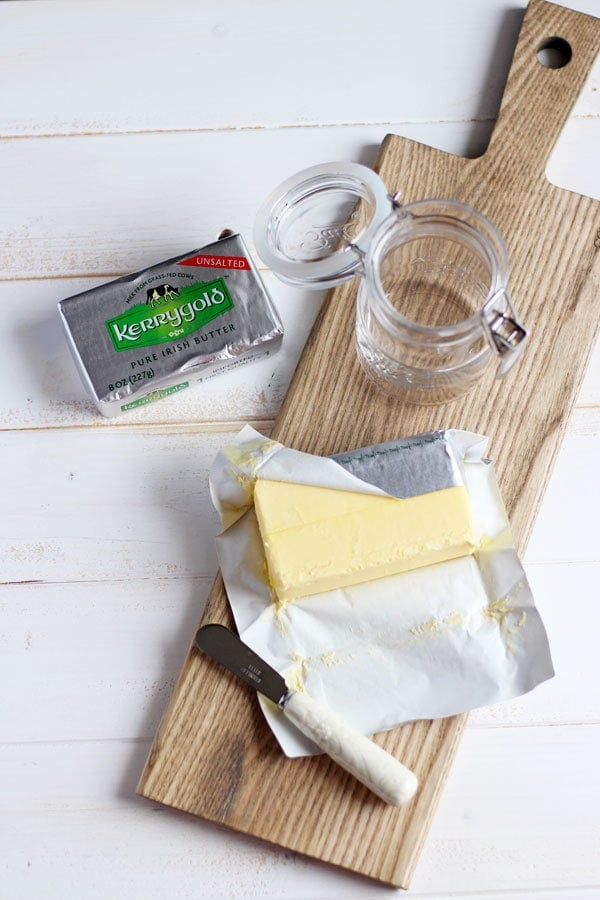
Add butter to a pan or skillet.

Let butter melt on med-low.
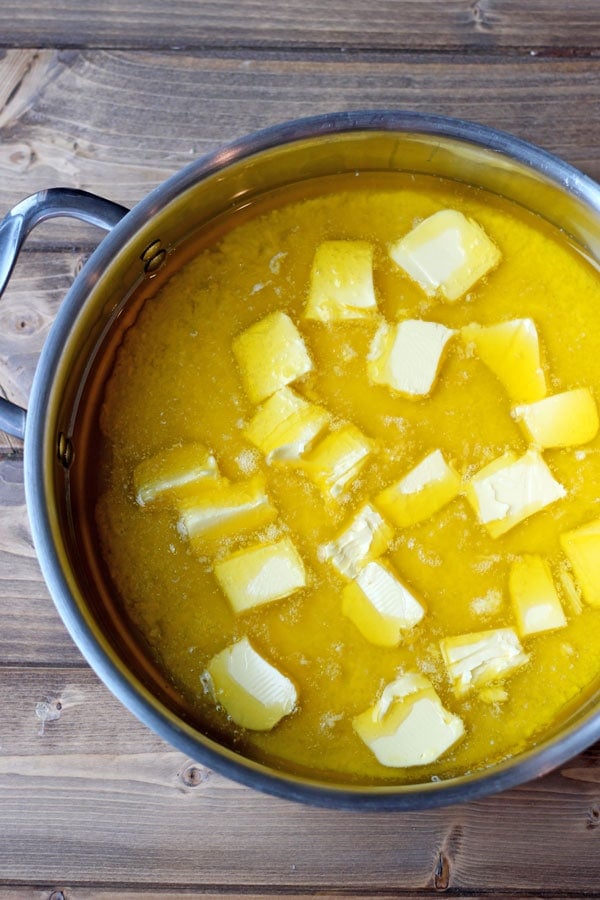
Bring temp up to medium and let butter come to a simmer (butter may start to foam).
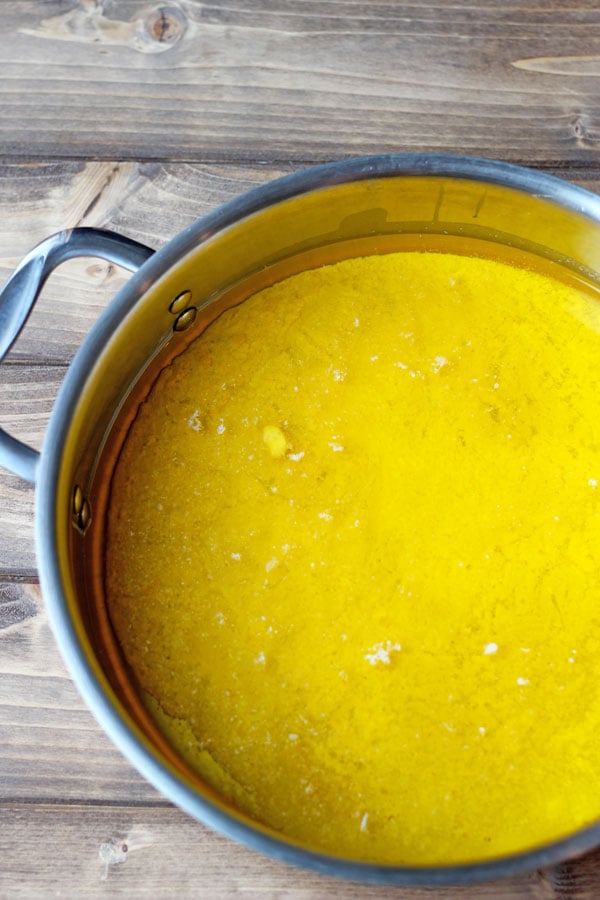
(you can see how there is a layer of milk solids at the bottom of the pan)
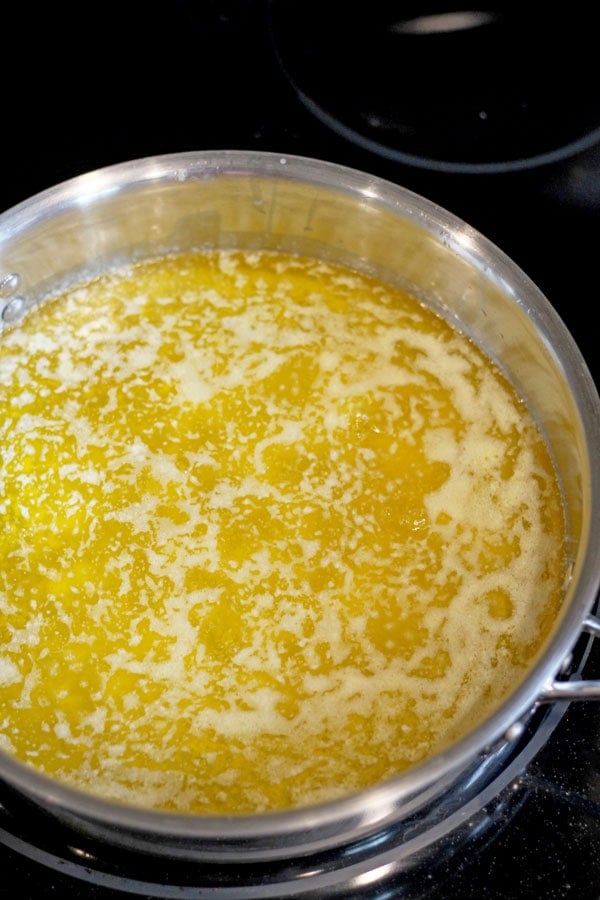
Remove as much foam from the top as you can with a slotted spoon or small hand-held strainer. This will allow the butter to continue to boil off as much water as possible.
Then watch until the butter turns a very dark golden color and starts to smell slightly nutty. Remove immediately.
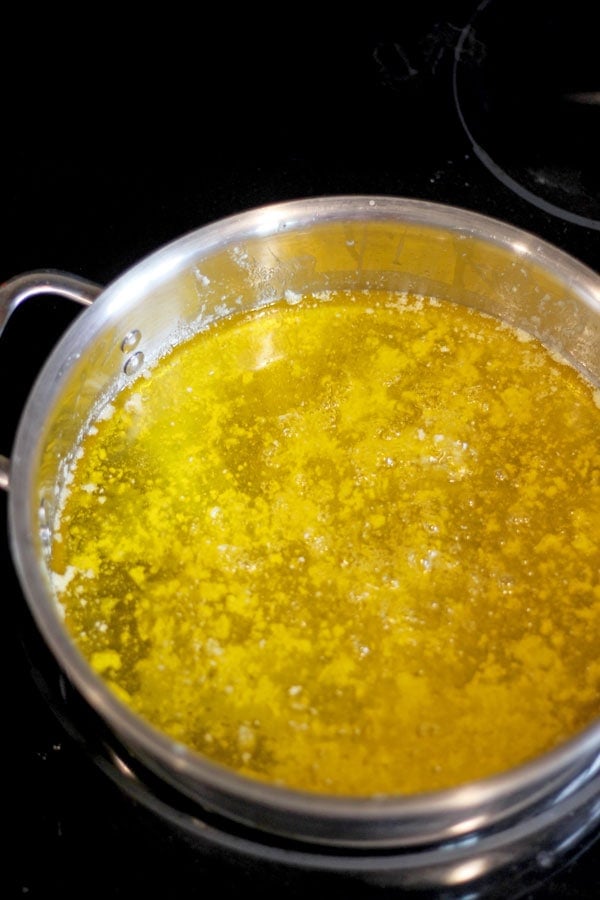
Pour though Unbleached Cheesecloth and a small strainer into a glass container (it will be VERY hot).
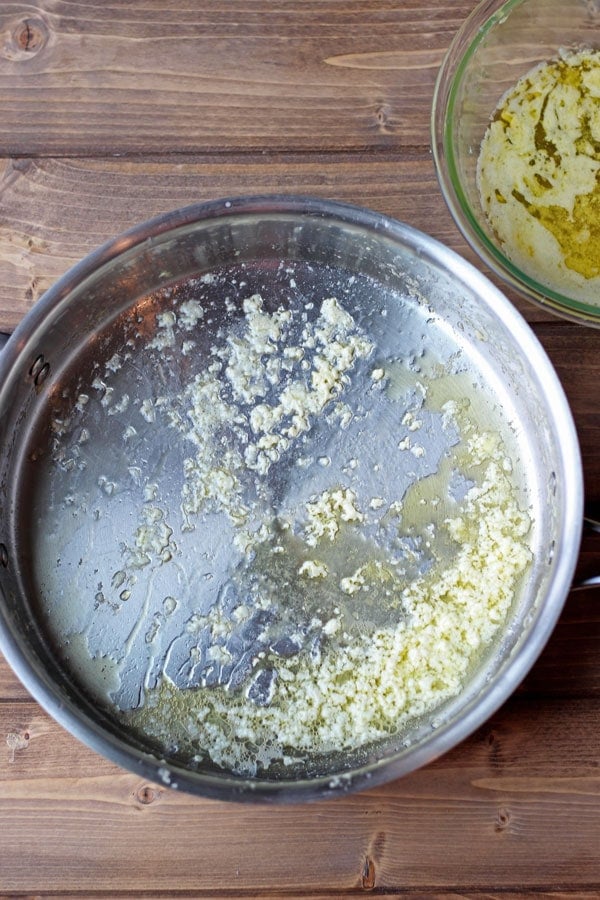
(the leftover milk solids)
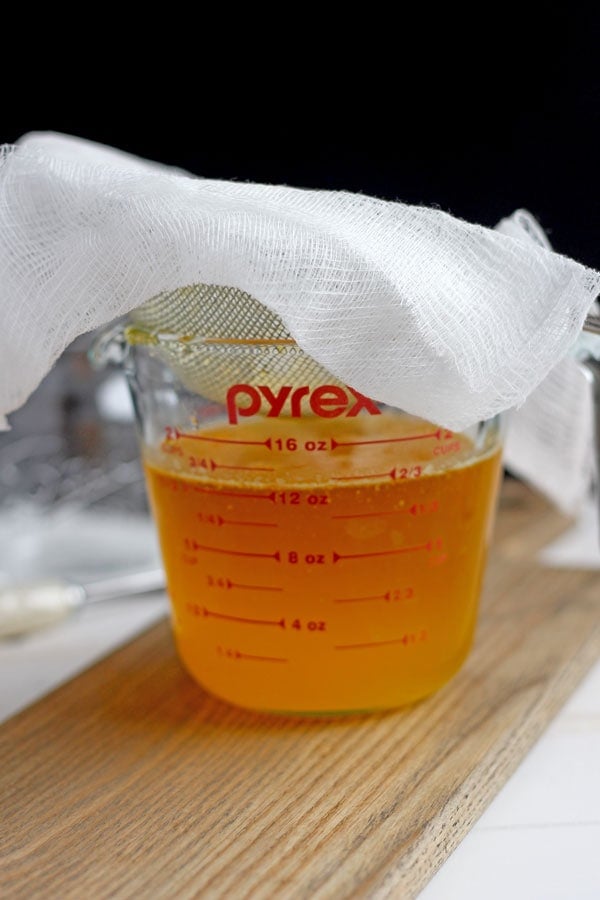
Save the milk solids – they can be used in a pasta sauce or for other cooking in the future.
And there you go – you got yourself your very own Ghee! Really not that difficult is it?
Is it worth it to make your own ghee
The answer is sometimes yes, sometimes no. If you got a really good deal on organic, grass-fed Ghee then the store-bought might be more economical compared to if you make your own with high-quality butter. Other times, it most definitely makes sense to make it yourself.
I don’t have a place super close to me that I could buy it from, so for now I will just make my own (although I am sure I could order it from places like Thrive Market and have it delivered).
Anyway, that is the story on Ghee. So what do I use it for?
Well, lately I have been just trying it out and attempting have a little each day for the health benefits. I put a little in my bone broth or in a smoothie. And then I have been cooking with it as well and will share a couple of my favorite recipes over the next week or so!
Here is the freshly-made Ghee:
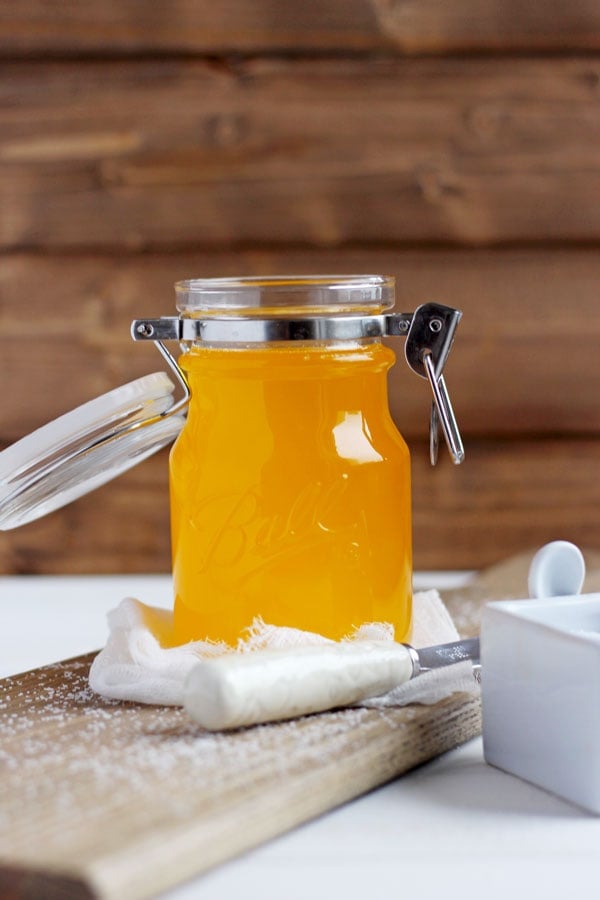
For storing, Ghee can actually be stored out of the fridge for almost a month, but I have been keeping mine in the fridge anyways. It will last in there for several months.
Looking for a recipe with ghee – here a couple:
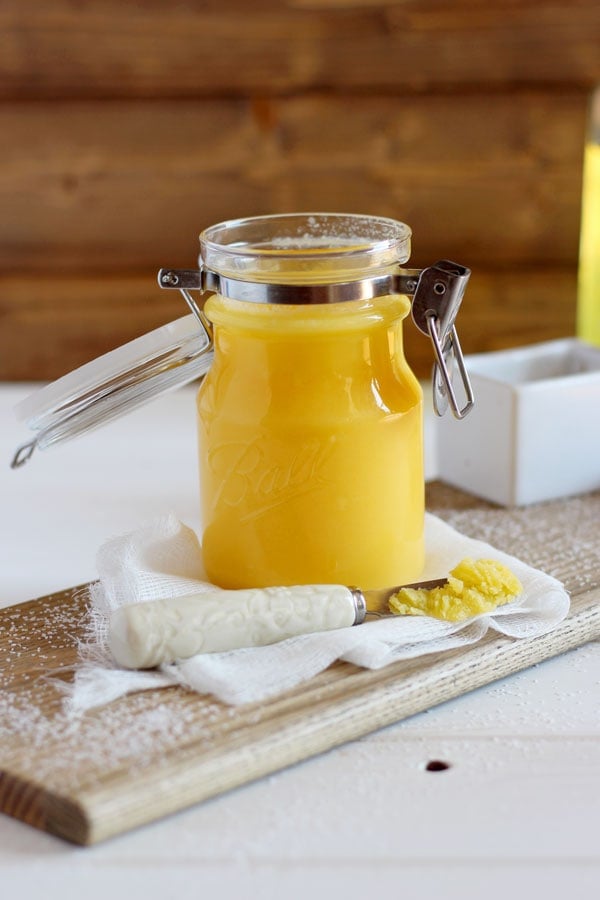
What you will need to make homemade ghee
- Butter
- Cast Iron Skillet or deep pan
- Sieve
- Cheesecloth
- Jar to hold it in
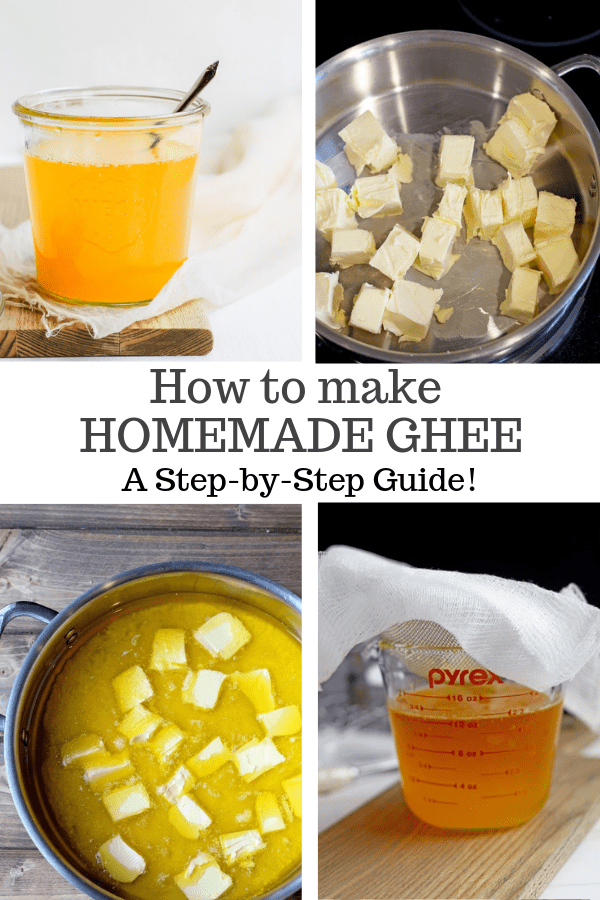
Other Recipes You Might Like
Don’t forget to check out my Instagram account for some behind-the-scenes action or give me a follow on Facebook or see what I am pinning on Pinterest!
Made this recipe and loved it?! We would love it if you would take a minute and leave a star rating and review – it is also helpful if you made any substitutions or changes to the recipe to share that as well. THANK YOU!
Print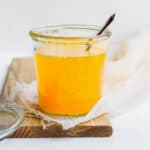
How to Make Ghee Recipe
- Prep Time: 5 minutes
- Cook Time: 15 minutes
- Total Time: 20 minutes
- Yield: Approx. 2 cups
- Category: Ghee
- Method: Stove Top
- Cuisine: American
Description
How to Make Ghee – a simple, tried-and-true method for making ghee at home!
Ingredients
- 1 pound of butter (I used Kerrygold)
Instructions
- Add butter to deep cast iron skillet or pan and bring heat to medium-low. Let butter melt.
- Once melted, bring up to medium heat and let butter start to simmer (uncovered).
- Carefully scrape off any foam/solids that come to the top with a small slotted spoon or small, hand-held sieve/strainer.
- Once the top is clear it turns a dark, golden brown and starts to smell slightly nutty, remove immediately. (as for time frame – it all depends on your temp, but it should take about 7-10 minutes).
- Pour through cheesecloth and a fine, mesh sieve into a glass container (careful it will be very hot).
Notes
- Storage: store in an airtight container on the counter for up to a month or in the fridge for several months.
- Slow Cooker Method: using a 6qt Instant Pot – set to Saute. Add ghee and let sit for 7-9 minutes. Start scraping off the foam that will gather at the top – don’t worry if you can’t get all of them, they will sink to the bottom eventually. Turn off and let sit 5 minutes. Pour through cheesecloth to strain.
- Instant Pot/Pressure Cooker: place butter in slow cooker and turn to HIGH for 4-5 hours (uncovered). Keep an eye on the ghee throughout (you don’t need to watch it closely, but just check on it intermittently especially after 2-3 hours). Scrape off any foam as you see it form. The butter will start to turn color. After 4-5 hours you can strain and store.
Originally published April 2, 2017.

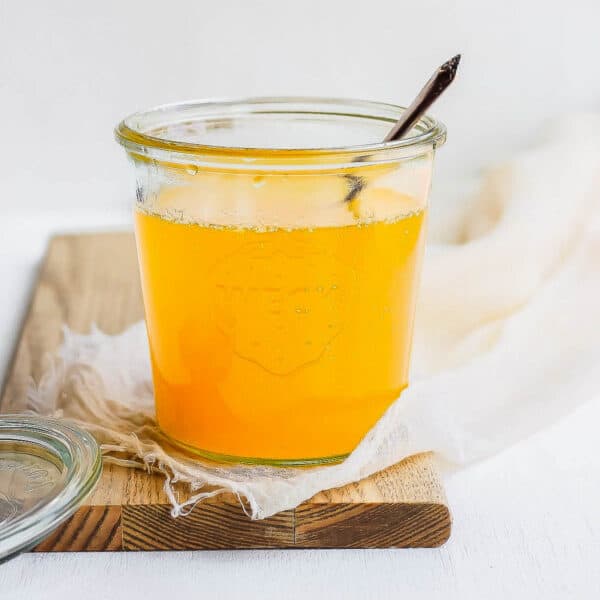
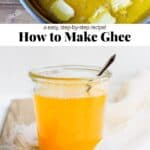
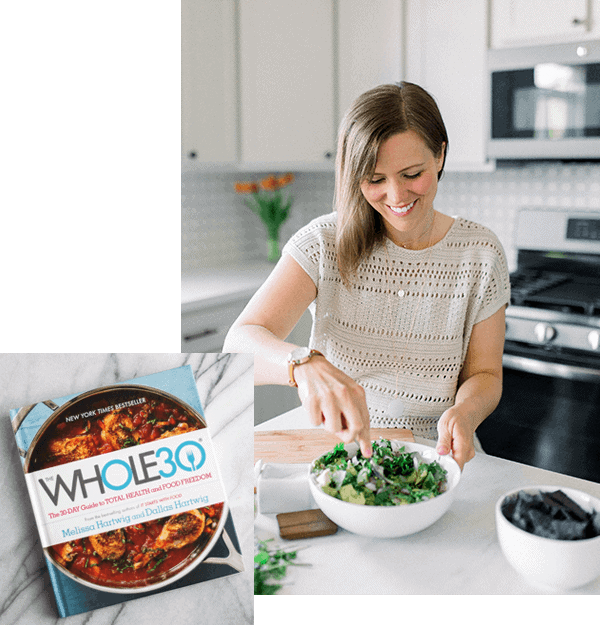
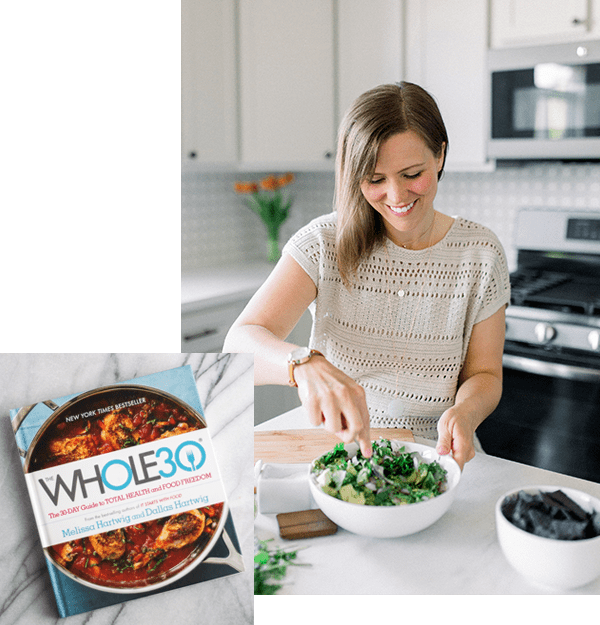





Robin says
I learned from an Indian friend that you don’t have to skim off the foamy top. Just stir it in and it becomes part of the milk solids on the bottom of the pan.
Antonet Roajer says
I love ghee!! I almost add ghee in everything from bread toast, curries, rice dishes, and desserts.
Erin says
That’s awesome! All great suggestions!!! ?